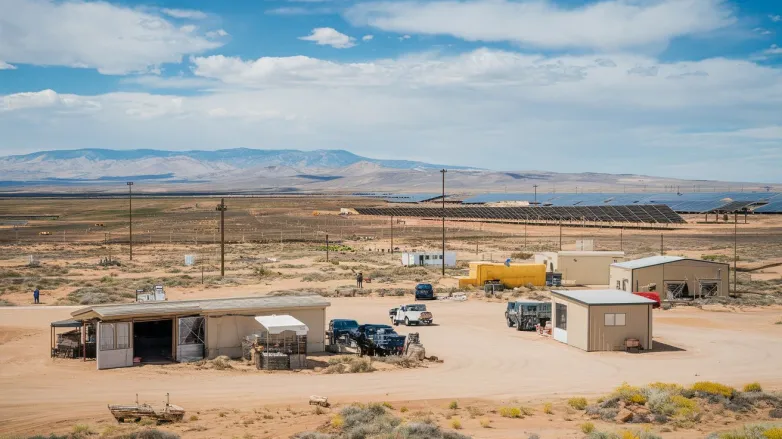BLM Allocates Land for Major 600-MW Utah Solar Project
- BLM reserves 5,159 acres for a groundbreaking solar project in Utah, setting the stage for sustainable energy with 600 MW from 174 Power Global's innovative two-phase development.

The U.S. Bureau of Land Management (BLM) has reserved 5,159 acres of public land for a 600-MW solar project in Beaver County, Utah, for a two-year period. This reservation halts any public land laws, including the Mining Law, to allow for a review of the project's potential environmental impacts.
The designated land will support the Star Range solar project, developed by 174 Power Global LLC, a subsidiary of South Korea's Hanwha Group. The project will be developed in two phases of 300 MW each, tapping into an existing 345-kV transmission line. 174 Power Global has a substantial project pipeline, including battery storage and photovoltaic initiatives across the U.S.
What are the environmental implications of the Star Range solar project in Utah?
Environmental Implications of the Star Range Solar Project in Utah
- Land Use and Habitat Disruption: The designation of 5,159 acres for the solar project may disrupt local ecosystems and wildlife habitats. Careful studies are necessary to assess impacts on local flora and fauna, including potential displacement of species native to the area.
- Water Usage: The construction and operation of solar facilities can require significant water resources, particularly if cooling systems or cleaning protocols for photovoltaic panels are implemented. Evaluating the water footprint of the Star Range project is essential, given Utah's water scarcity issues.
- Soil Disturbance: The installation of solar panels will lead to soil disturbance, which can result in erosion, changes in soil chemistry, and loss of agricultural viability in the region. Baseline studies of soil conditions should be conducted pre- and post-construction to mitigate these effects.
- Air Quality Improvements: Transitioning to solar energy can significantly reduce air pollution from fossil fuel sources. The operational phase of the Star Range project may contribute to improved air quality in the region by displacing carbon-intensive energy sources.
- Carbon Footprint Reduction: By generating renewable energy, the Star Range solar project could play a key role in decreasing greenhouse gas emissions, contributing to national and global climate goals. The project can help offset emissions from conventional power plants in the region.
- Visual and Aesthetic Impact: The installation of large solar farms can alter landscapes and views, potentially affecting local communities' aesthetic experiences. Engagement with community stakeholders is essential to understand and address these concerns.
- Economic Benefits and Drawbacks: While the project is likely to create jobs during its construction and operational phases, a thorough assessment of any potential negative impacts on local industries, such as agriculture or tourism, is necessary.
- Reclamation and Long-term Land Use: Post-project land reclamation plans must be developed to ensure that the land can be restored or repurposed after the end of its operational life. This includes re-establishing native vegetation and minimizing long-lasting ecological effects.
- Cumulative Environmental Effects: It is vital to consider the cumulative impact of multiple solar projects in the region, as well as their interaction with other land uses such as mining or agriculture, to understand broader environmental impacts.
- Public and Indigenous Land Use Considerations: Engagement with indigenous groups and surrounding communities is essential. Projects on public land can be contentious, and understanding the historical and cultural significance of the land will help address community concerns and enhance project acceptance.
- Biodiversity Conservation Efforts: The project should incorporate measures to protect regional biodiversity, possibly through creating wildlife corridors or developing partnerships with conservation organizations.
- Innovative Technology Integration: Potential integration of storage solutions can enhance the project’s reliability and support grid stability, which could further improve the project’s environmental performance by facilitating the use of renewable energy even during non-sunny hours.
As the Star Range solar project proceeds through regulatory review, comprehensive environmental studies are crucial to adequately assess its impacts and ensure that sustainable practices are adopted throughout the project's lifecycle.
Also read

